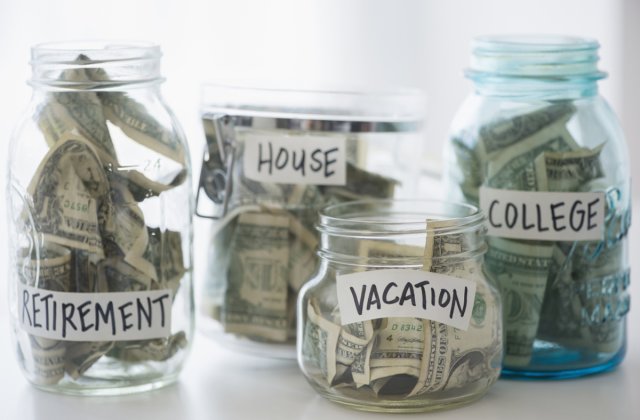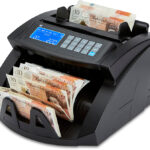
Minimizing Money Waste on Useless Things
How to Stop Wasting Money on Things that Aren’t Important
A lot of the private finance world will tell you to never spend money. Ever.
Read a couple of money articles, and you’ll soon start believing that there’s no quicker path to finish financial destruction than buying a $ 4-morning coffee.
Nonsense.
For us mere mortals, swearing off all spending forever is probably going to be about as successful because of the latest crash diet fad. After every week of drinking smoothies for breakfast, lunch, and dinner, is it any surprise the primary thing you’re craving maybe a heaping mountain of food?
Click here for a better consultation Hult private capital.
In the same way, taking this extremist view on spending only ensures feelings of shame and guilt, even for necessary purchases or things that will actually improve your life. this is often not on anyone’s recipe for a healthy relationship with money.
Short of living off the grid, spending is sometimes necessary, and may even assist you to remain sane while living a non-hermit lifestyle.
Wait, what?? A frugal personal finance blogger who won’t execute me for spending a touch little bit of money??
Yes, pocket money on what causes you to happy is perfectly okay, but there’s a particularly important catch.
Don’t waste money on things that aren’t important to you. there’s an enormous difference, and here is where most of the people catch on completely wrong.
What causes you to happy isn’t decided by your friends, your neighbors, or the commercials on TV.
Just because the car industry spends billions of dollars per annum trying to convince you that parting with $30,000 of your hard-earned money will cause you to feel good, doesn’t make it true. simply because your friends enjoy spending lavishly on clothes, doesn’t mean that’s for you. Maybe you enjoy travel more. Maybe you enjoy something else entirely.
Thankfully, I even have devised a system for evaluating your spending which eliminates all waste, and ensures your discretionary income goes only to purchasing what’s most vital to you.
Step 1. Putting Your Spending into Perspective
Imagine you create $50,000 per annum. you discover a bottle, and inside that bottle maybe a genie. He proposes you a deal.
You can have that new $25,000 car you’ve always wanted, but there’s a catch. you’re indebted to him for six months. for six months straight, you’re under his watchful eye between 9 AM and 5 PM. you are doing exactly as he says, performing exactly what he wants. No arguing allowed, he sets the principles and you perform his tasks. He’s a generous genie though. He allows you a 30-minute break for lunch, and he allows you two days of leisure hebdomadally.
At the top of these six months, the sole thing you get is your new car. Would you trade a half year of freedom for that one nice car?
I wouldn’t.
Everyone, every day, is granted options from this hypothetical genie. And day after day, we fail.
The question you’ve got to ask yourself before every purchase is:
“How long would I even have to figure to shop for that?”
Money, at its core, maybe a unit of exchange for time.
When a plumber fixes a restroom, he’s selling his time to diagnose and fix a drag.
When a craftsman sells a table, they’re selling the time and expertise that allowed him to make a desirable piece of furniture.
When an office worker receives her paycheck, she and therefore the company are placing a worth on the hours of her life dedicated to the business’s strategic goals.
Reaching financial independence grants you unlimited freedom together with your time. Burying yourself in debt imprisons you to spend time earning wages to pay off your dues.
The key lies in trading some time for those few special things within the world which are truly important to you.
And to try to do that, we must determine an item’s true cost.
Step 2. “How Much Does that basically Cost?”
When you buy any item, what proportion are you actually paying? Our good friend Uncle Sam features a say therein, and he’s awfully skilled at quietly pushing prices up without us realizing.
Yes, I’m talking about taxes.
Everything during this country is purchased with after-tax dollars. Assuming you’re within the 25% tax bracket and a law-abiding citizen who contributes to Social Security and Medicare, you’re paying somewhere around 27% of your salary to taxes.
That’s nearly a 3rd of your working hours before you ever see a penny.
Your $30 steak dinner? you’ve got to earn $41 dollars to buy it because the taxman collected $11 before you ever got a cent.
Don’t ditch regular old nuisance tax either. My city features a nearly 10% meal tax (what’s yours?) which pushes the ultimate cost of that dinner to about $45 dollars. If I drove to the restaurant, I can expect to pay taxes on the gas also.
Step 3. Re-Thinking the No Thought Purchase
With this in mind, it’s time to bust out the seriously scrutinizing hand glass on where we are spending our money.
$8 lunches: Are those extra 10 minutes of sleep really well worth the $12+ true dollars this lunch goes to cost me? Are those extra 10 minutes of sleep really worth working nearly a half-hour during a cubicle? Or wouldn’t it be a far better use of my time to hit the hay a touch earlier the night before and take one small step towards financial freedom?
$20 event parking: Working for nearly two hours with great care I can shuffle my lazy self right into the event? No thanks. I’d rather plan ahead and park a touch farther down the road. Not only does this grant the chance to hold out the world’s most currently underrated activity (walking) but it also allows exploring the gorgeous city or neighborhood first hand.
Trinkets, gadgets, souvenirs: Throwing down a few bucks on a cute, modestly priced whatever within the novelty shop looks like a fast and painless process. It’s a quick transaction and you didn’t even notice the $25 dent in your wallet. Now consider the time spent at work, on calls, and handling difficult customers that earned you the nearly $34, which finally whittled right down to the $25 in your pocket today. Is it still worth it? Lord help if that gadget happens to be a $1,000 MacBook…
I recently went on a way needed vacation. I scored a deal on airline tickets, which was the one mammoth expense I imagined making up the majority of the trip’s cost. Yet once I reviewed my spending from the trip, I used to be shocked to ascertain my airfare cost paled as compared to the no-thought purchases throughout the holiday.
Snacks for the car ride, a fast beer at a stimulating spot, eleventh-hour sunblock, lunch at the airport… it had been this type of no-thought spending that ended up costing the foremost. The airfare and vacation were unquestionably worthwhile. The mindless spending? I can’t say an equivalent.
This exercise is often applied for nearly every item that scrolls across your mind are never ending conveyer belt of impulse purchase ideas. When the buying decision is framed within the quantifiable days, months, and years of life an item truly costs, the cash wizard thinks twice.
Click here for a better consultation Hult private capital.


















